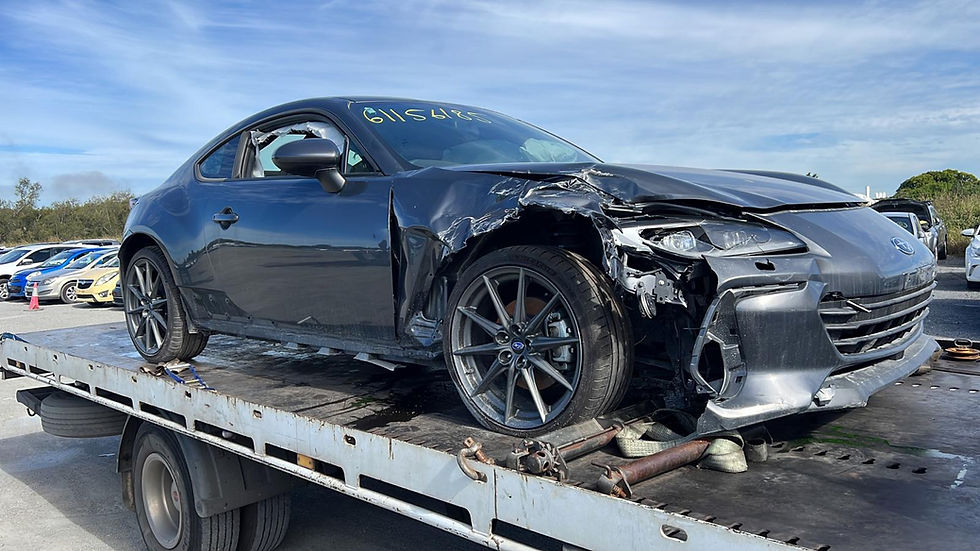6 Tips from Car Wreckers Brisbane for Maintaining Your Car’s Timing Belt
- Savannah Schleinitz

- Jun 10, 2024
- 3 min read

The timing belt is a crucial component of your car’s engine, ensuring that the engine’s valves open and close at the correct times during the intake and exhaust strokes. If the timing belt fails, it can lead to significant engine damage and costly repairs. To help you keep your car running smoothly, here are six tips from Car wreckers Brisbane for maintaining your car’s timing belt.
Understand the Importance of the Timing Belt
Before diving into maintenance tips, it’s essential to understand why the timing belt is so important. The timing belt synchronizes the rotation of the crankshaft and camshaft, ensuring that the engine’s valves open and close in harmony with the movement of the pistons. This coordination is vital for the engine’s performance and efficiency. A broken timing belt can result in engine misfires, reduced power, and even catastrophic engine failure.
Know Your Replacement Schedule
Every vehicle has a recommended timing belt replacement interval specified by the manufacturer. This interval is usually based on mileage or time, typically ranging from 60,000 to 100,000 miles or 5 to 7 years. Refer to your car’s owner’s manual to find the exact replacement schedule for your vehicle. Adhering to this schedule is crucial to prevent unexpected timing belt failure.
Look for Warning Signs
Even if your timing belt hasn’t reached the recommended replacement interval, it’s essential to be vigilant for any warning signs that it might need attention. Some common signs include:
Engine Misfires: A worn timing belt can cause the engine to misfire or run erratically.
Ticking Noise from the Engine: A ticking sound coming from the engine could indicate that the timing belt is worn or damaged.
Difficulty Starting the Car: If the timing belt is slipping, it can affect the engine’s ability to start smoothly.
Oil Leaks: Oil leaking from the front of the motor can be a sign that the timing belt cover is loose or damaged.
If you notice any of these symptoms, it’s essential to have your timing belt inspected by a professional mechanic as soon as possible.
Regular Inspections
Regular inspections can help identify potential issues with your timing belt before they become serious problems. During routine maintenance, ask your mechanic to inspect the timing belt for signs of wear and tear, such as cracks, fraying, or glazing. Early detection of these issues can prevent a complete timing belt failure and save you from costly repairs.
Replace Related Components
When replacing the timing belt, it’s a good practice to replace related components simultaneously. These components include the water pump, tensioner, and idler pulleys. The reasoning behind this is simple: these parts have similar lifespans and are often located in the same area as the timing belt. Replacing them together can prevent future issues and save on labor costs, as the mechanic won’t need to disassemble the engine multiple times.
Use Quality Parts and Professional Services
When it’s time to replace your timing belt, ensure that you use high-quality parts. Genuine or OEM (Original Equipment Manufacturer) parts are designed to meet the exact specifications of your vehicle, providing reliable performance and longevity. Additionally, having the timing belt replaced by a professional mechanic is crucial. Proper installation is vital for the timing belt to function correctly, and a trained mechanic has the skills and tools necessary to perform the job accurately.
Bonus Tip: Keep a Maintenance Log
Keeping a detailed maintenance log can be incredibly helpful. Record the date and mileage of when the timing belt and related components are replaced, along with any inspections or services performed. This log can serve as a reminder for future maintenance and can be valuable information if you ever decide to sell your car.
Conclusion
Maintaining your car’s timing belt is essential for the health and performance of your engine. By understanding the importance of the timing belt, adhering to the replacement schedule, watching for warning signs, performing regular inspections, replacing related components, and using quality parts and professional services, you can ensure that your car runs smoothly and avoids costly engine repairs. Following these tips from will help you keep your timing belt in top condition and extend the life of your vehicle’s engine.




Comments